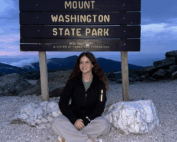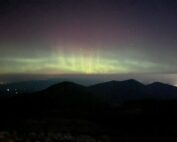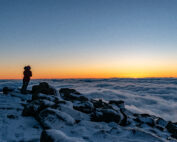What is a nor’easter?
2018-03-17 10:15:50.000 – Jillian Reynolds, Summit Intern
You may have heard the term ‘nor’easter’ used in the news or from our forecasts during the past couple months. You might think “We get storms all the time. But what exactly would define a storm as being a nor’easter?” That is what I will be talking about in this blog post.
The Weather Channel defines a nor’easter as a “strong area of low pressure along the East Coast of the United States that typically features winds from the northeast off the Atlantic Ocean”. They are a result of air temperatures over land being much colder than air temperatures over the ocean during the winter and early spring months. The difference in temperature between the warm air over the water and cold air over land provides the instability and energy needed to develop and fuel nor’easters.
A nor’easter can bring heavy rain or snow, strong winds, and coastal flooding to the affected locations. Keep an eye on the weather in order to be sure when to take the proper steps to prepare. This includes stocking up on extra food and water, just in case you were to lose power for a couple days due to trees and power lines being knocked down by strong winds. It will also include staying off of the flooded/snow-covered roads until flooding subsides or they are plowed.
Jillian Reynolds, Summit Intern
From Weather Observer to Intern, to Observer Again
From Weather Observer to Intern, to Observer Again By Madelynn Smith As I rode in the backseat of our Obs van up the Auto Road for the first time as a full-time employee at
From Mountains to More Mountains
From Mountains to More Mountains: This Time with Stronger Winds By Alyssa Bélanger On the observation deck in high winds. Hello there! My name is Alyssa Bélanger and I am a fall
From Summit to Sign-Off: My Farewell to the Rockpile
From Summit to Sign-Off: My Farewell to the Rockpile By Amy Cotter Enjoying my last Mount Washington sunset (for now) on September 13, 2025. After two incredible years with the Mount Washington




